Freshwater aquaculture is an integral part of the overall agriculture production system in China. It is practised either as a primary occupation supplemented by other crops, a secondary activity or a sideline occupation depending on the resources available. Such integration of aquaculture with agriculture is practised in other countries to a lesser extent (i.e., duck-cum-fish culture in Nepal and Hungary). It is only in China where aquaculture is undertaken on a fully-integrated, nationwide scale.
Integration promotes the full use of raw materials produced in the farm for food production. Animals provide organic manure that fertilizes the ponds and the croplands; the land, in turn, produces crops and plants for food for animals, fish and man; the wastes of fish accumulated in the pond humus go back to the soil where land crops are grown. This inter-relationship illustrates the practicality of China's approach to diversified agriculture and integrated rural development.
The Mission was informed that there are about 20 million ha of freshwater areas available in China, of which about 6.7 million ha can be used for aquaculture (see section 2.3). This is made up of 60 percent under pond culture, including irrigation water reservoirs and village ponds, and 40 percent in natural or artificial water areas (lakes, dams and reservoirs) utilized for aquaculture.
Fish rearing in China has a long history. It used to depend on natural stocks of fry collected from the Yangtse River. However, as a result of the development of artificial spawning techniques in 1953, it became possible to produce black carp fry on a large scale for aquaculture use. By 1958, other species of the Chinese carps (grass, silver and bighead carps) were also successfully induced to spawn and this marked the end of the dependence on natural fish seed sources. Induced spawning has become a routine farm activity in the communes since 1958 and most farms produce their own fry and fingerlings. Fish breeding centres that were established in certain communes soon after artificial spawning was developed now take care of the fish seed requirements of farms where there are not adequate facilities for artificial spawning.
A key factor that has influenced aquaculture development in China is to be found in the national policy on land and water development, wherein top priority has been given to water conservation measures in the overall development programme. This has led to the nationwide construction of water control structures for flood prevention and stabilization of river flows. Lake levels have been likewise controlled by the construction of hydraulic structures and sluices at the main river connexions, and new water bodies have been developed such as dams and reservoirs (see section 3). These efforts gave tangible benefits in agriculture production, including aquaculture, that China now enjoys. All water surfaces thus created in land and water development, as well as natural lakes and ponds, are utilized for fish production. The use of these areas for aquaculture is a manifestation of the slogan “Wherever there is water, there must be fish”.
Some existing fish ponds appeared to have been developed as a result of land consolidation and farmland amelioration for agricultural crop production. Many are traditional ponds in which fish have been cultivated for many years. In low-lying deltaic areas, ponds came into existence as a result of projects for development of “raised fields”, constructed by excavating soil from adjacent areas of land or by digging drainage ditches around rectangular plots to elevate the fields and lower the water table. This, in effect, corrects waterlogging problems in farmlands and creates ponds. In Nan Huei County, Shanghai, ponds were created out of the diggings made for the manufacture of bricks.
Marginal lands along river deltas, shallow margins and adjoining waterlogged areas are reclaimed for agriculture, including fish-pond development. One example of this is the reclamation of 2 400 ha near Taihu Lake, which was completed in 1975. This area used to be under water most of the year and produced mainly aquatic plants. It was reclaimed primarily for fish production.
The size of newly constructed ponds is usually about 4 000–5 300 m2 (6–8 mu) with a depth of 2–3 m. Movement of water in and out of the ponds is usually accomplished by pumping as the land used for construction of ponds is generally low-lying.
Lakes, dams and reservoirs are developed and used in aquaculture by applying the principles of polyculture in ponds (see section 5.3). Shallow bays are blocked off by netting or screens to serve as nurseries or fish-breeding areas and for rearing fry and fingerlings to stock the water bodies. Some lakes, such as the East Lake and Fan Li Lake, not only serve as aquaculture areas but also for recreational purposes.
Paddy fields used for aquaculture are those which have adequate water supply and drainage systems.
There are two methods used, namely “deep water” and “shallow water”. The former uses up to 0.5 m of water while the latter uses a minimum of 5–10 cm depth of water. For both techniques trenches are constructed in the paddy for fish retention. For details of paddy-cum-fish culture see section 3.9.2.
Drainage canals and ditches within the farm are also utilized for aquaculture. In some instances, aquatic plants are raised in these areas to provide feeds and fodder for the livestock and other animals raised on the farm. While the Mission was not told the total area of irrigation sector canals and ditches in China, it must be substantial.
Freshwater fish culture in China is mainly polyculture of the “family fish”, the Chinese major carps, in combination with other species with complementary feeding habits, to utilize all the available food materials in the water. Monospecies culture is used only for fry and fingerlings up to 3 cm size.
In ponds, the main species raised is the grass carp in combination with bighead, silver carp, black carp, mud carp, common carp and bream. The proportion of each species varies according to prevailing pond conditions and raw materials available for fish rearing.
There are two types of polyculture practised in China, namely multigrade and mixed-age fish culture.
Multigrade fish culture is a technique whereby fish are reared in a series of ponds from fingerlings to marketable size, with fish sorted in the ponds according to size. This method takes advantage of the maximum growth potential of the fish as their density in the ponds can be adjusted for the size of fish as well as for productive capacities of ponds. This enables the farmer to undertake a continuous cycle of stocking and harvesting, increasing the output. The rearing period is also shortened and production of the desired size of fish for market facilitated. This technique, however, can only be practised in communes that have several pond units for large-scale production.
As shown in Table 5 the stocking density decreases as fish become larger.
Table 5
Stocking Density for Multigrade Polyculture
| Grade | Size of Fish (g) | Stocking Density/mu (per ha) | Rearing Period (days) | |||
| Bighead | Grass Carp | Silver Carp | Mud Carp | |||
| 1 | 14–65 | 450 (6 750) | 100 (1 500) | 40 | ||
| 14–80 | 250 (3 750) | |||||
| 5–20 | 7 500 (112 500) | |||||
| 2 | 65–225 | 140 (2 100) | 450 (6 750) | 150 | ||
| 80–500 | 40 (600) | |||||
| 20–60 | 2 500 (37 500) | |||||
| 3 | 225–500 | 60 (900) | 200 (3 000) | 150 | ||
| 500–1 000 | 20 (300) | |||||
| 60–270 | 850 (12 750) | |||||
| 4 | 500–1 200 | 25 (375) | 70 (1 050) | |||
The mixed-age or size polyculture is a traditional method where fish of different species of varying sizes are reared in the same pond from fingerling to marketable size. The stocking density and combination of species vary from place to place. Selective harvesting is used to remove the larger individuals during the rearing period. Subsequently, the pond is restocked with small-size fish to replace the ones removed. In this method it is common to find a total stocking density of 15 000 fish/ha (1 000/mu). Stocking combinations used in polyculture in China are shown in Table 6.
Both techniques, multigrade and mixed-age polyculture, apply a principle of stock manipulation also used in the monoculture of milkfish in Taiwan and the Philippines. Here, different sizes of fish seeds are initially stocked and the larger ones are harvested earlier in the rearing period with subsequent stocking of small fish after each partial harvest. In effect, there are three to four croppings and stockings carried out during a rearing cycle of 10 to 12 months.
In lakes and reservoirs where management is less intensive, silver carp and bighead carp form the major species and a density of 4 860 fish/ha (325/mu) is used. This figure also varies according to the ecological conditions and natural productivity of the water areas concerned. An example of stocking combinations used in reservoirs (Ho Lung Reservoir) is as follows:
| Silver carp | 46% |
| Bighead carp | 16% |
| Grass carp | 10% |
| Mud carp | 21% |
| Common carp | 8% |
Table 6
Various Combinations of Species used in Polyculture in China
| Species | % composition | |
| (In ponds visited in the Pearl River Delta) | ||
| 1. Where major species is grass carp: | ||
| Grass carp | 55 | |
| Silver carp | 16 | |
| Bighead carp | 10 | |
| Others | 19 | |
| 2. Black carp as major species: | ||
| Black carp | 42 | |
| Grass carp | 24.2 | |
| Silver carp | 12.4 | |
| Bighead carp | 7.4 | |
| Wuchan fish | 7.4 | |
| Common carp | 3.4 | |
| Golden carp | 3.2 | |
| 3. Silver carp as main species: | ||
| Silver carp | 65 | |
| Bighead carp | 10 | |
| Grass carp | 12 | |
| Common carp | 5.2 | |
| Wuchan fish | 7.8 | |
Fish culture in canals and ditches observed in Chen-tung People's Commune uses a combination of the following species:
| Bighead and silver carp | 30% |
| Grass carp | 15% |
| Black carp | 5% |
Wuchan fish (bream) and other bottom-feeding species | 50% |
As normally practised in most managed fish culture operations, ponds are treated to eradicate obnoxious pests and nuisance organisms prior to stocking with fry or fingerlings. Tea-seed cake and quicklime are commonly used for this purpose in China. The former is applied at the rate of 525–675 kg/ha (35–45 kg/mu) and the latter at 900–1 050 kg/ha (60–75 kg/mu) in the case of dry ponds, and 1 875–2 250 kg/ha (125–150 kg/mu) in wet ponds, with 1.0 m depth of water.
Organic manure is the main fertilizer used in ponds, lakes or reservoirs. No inorganic fertilizers are applied for fish rearing. This is the main reason why all farms undertake animal husbandry - to supply the necessary fertilizers for fish farming and at the same time to diversify the economy.
The Mission was informed that two to three pigs are raised to supply adequate organic manure for each mu of pond (30–45 pigs/ha). Manure of cows and chickens is also utilized as fertilizer mixed with plant materials and soft mud. These are put together in a composting pit and allowed to ferment for ten days, after which the resulting compost is transported to the ponds or fields.
In some places composting tanks are constructed in such a way that the liquid product of fermentation flows directly into the water supply canals to the fish ponds (Figs. 5–7).
The use of human waste as fertilizer is a traditional practice in China and is continued today. The system of utilizing such wastes, however, has been improved by the use of anaerobic treatment for several weeks. Of still greater importance to the continuing decline in intestinal disease has been the great increase in rural health care through the “barefoot doctor” programme and massive programmes in rural health such as the campaign to eradicate snail fever (schistosomiasis). It is estimated that “night soil” constitutes as much as one third of the total fertilizer resources of the nation (McGarry, 1976).
The rate of organic manure application in ponds as practised in the southern part of China (Kwangtung) varies from 5 625–10 125 kg/ha (750–1 250 jin/mu) applied in three portions with the first application more than the last two.
Fertilization of lakes and reservoirs is indirectly undertaken through intensification of agriculture and animal husbandry along water areas and low-lying close to the shores. Chicken, cattle, pigs, sheep, ducks and geese are raised in these areas to increase the fertility of water bodies. This is widely practised in China in compliance with the national policy of an all-round development of a diversified economy (see also section 4.2.2.2).
It is interesting to note, as mentioned to the Mission, that 50 kg of fish produce enough pond humus to fertilize 6 670 m2 (10 mu) of crop land. This is the practical reason for locating the ponds between croplands. The pond humus is collected four to five times a year and applied to vegetables and land areas where other crops are grown (Fig. 8). Removal of pond humus also helps to increase O2 in the water due to the removal of organic materials.
Fish culture in China makes use of plant materials as feeds which are produced on the farm. Usually supplementary feeding with high protein of animal origin is not practised, except that the black carp may be fed with snails and clams gathered from lakes. The latter practice was seen only in the lower Yangtse region in Wushi and Shanghai, where black carp are raised as a major species because of the abundance of snails and clams in nearby Taihu Lake.
In most other places grass carp is the major species cultivated and this is fed mainly with various grasses and vegetables which are grown along the slope of the pond dikes. Silkworm pupae and faeces are also utilized as feeds where they are produced in considerable quantities. In the silk-producing areas mulberry is often cultivated in between the fish ponds (Fig. 9).
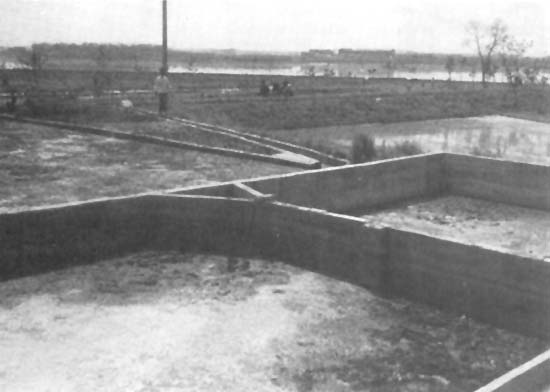
Fig. 5 Pig manure composting tanks with canals to convey the liquid product to the water supply system leading to the fish ponds, Pai-tan Lake, Fish Cultivation Station, Hupei Province

Fig. 6 Water supply system fed with pig manure, Pai-tan Lake Fish Cultivation Station
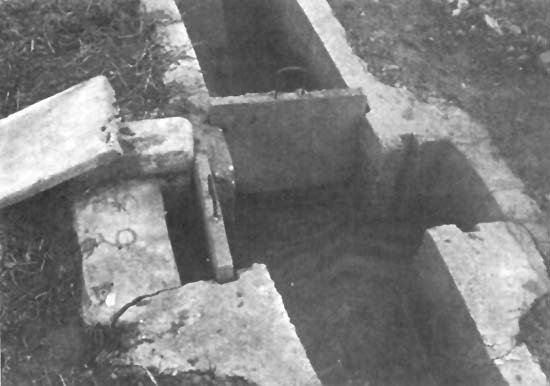
Fig. 7 Water control structure along the water supply canal, Pai-tan Lake Fish Cultivation Station
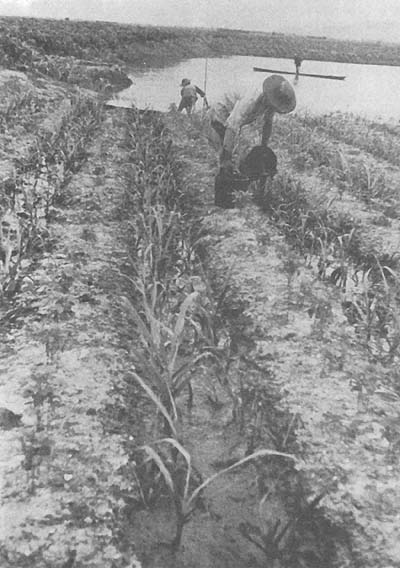
Fig. 8 Collection of pond humus and its application to crops grown near the pond, Shia-Kia People's Commune, Kwangtung Province
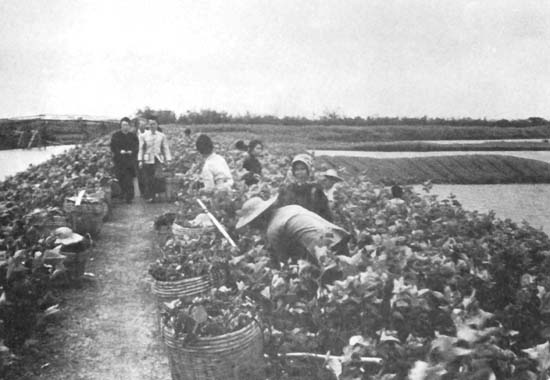
Fig. 9 Mulberry trees planted between ponds, Le Liu People's Commune, Kwangtung Province
The Mission was informed that feeds given to fish usually consist of 99.6 percent of rough plant material (grass and vegetable tops) and only 0.4 percent fine food consisting of residues of fermented products (soybean curd, soybean and peanut cake, rice and wheat bran). The natural fertility of the water is also enhanced by the application of organic manure which promotes the growth of plankton feeders, such as the silver carp and bighead. Other species such as the common carp and Wuchan fish are bottom and detritus feeders, while black carp feeds on snails. Based on the availability of these feed materials, the ponds, lakes and reservoirs are stocked with appropriate combinations of different species of polyculture.
According to information given to the Mission members, 60–70 kg of grass and vegetable tops produce 1 kg of grass carp; 50 kg of snails and clams produce 1 kg of black carp; 100 kg (200 jin) of fertile water1 produce 1 kg of silver carp. Fish excrement accumulates in the pond bottom and serves as organic manure which helps fertilize the water for plankton growth. It was mentioned that 500 g (1 jin) of fish waste produce 0.8 kg of silver carp or bighead; 25 kg of animal manure produce 500 g of silver carp and bighead.
Grass and vegetables being the main feed materials for fish, the pond dikes are usually wide - providing enough land space for the production of these items. Information obtained in this regard was that 66.7 m2 (0.1 mu) of land is needed to provide 667 m2 (1 mu) of fish pond with plants as feed materials (Fig. 10).

Fig. 10 Pond slopes planted with grass to serve as food for grass carp, Shia-Kia People's Commune, Kwangtung Province
It is common practice in China to utilize the slopes and both sides of the crown of the pond dikes for planting elephant grass, oil seed plants and vegetables to feed the fish and other animals raised on the farm. Elephant grass is particularly useful as the roots strengthen the dike and prevent soil erosion. It may be harvested every ten days.
As with other aspects of Chinese fish culture, the feeding practices are not unique to China. The Mission was much impressed, however, by the simple and practical approaches seen. It seemed particularly significant that all of the major inputs, such as feed, fertilizer and fish seed, are produced within the farm. In other countries, some or all of these are produced at a distance, adding transport costs and uncertainties of supply and delivery. The use of organic fertilizers and locally-produced feed materials is especially to be recommended for most of the developing countries. Unfortunately, the latter have often elected to adopt commercial fertilizers and feeds simply because it is the practice in the developed countries.
Almost all of the farms visited by the Mission produce their own fry by artificial spawning methods. This is a common practice among the farmers in China, a situation that is not yet found in other countries. Although induced spawning techniques are well known outside China, their practice is limited to specialized workers in research institutions engaged in artificial spawning studies and to stations specialized in fry production. The practical application of several such techniques developed in research institutions has yet to find its way to the fish farmers at the farm level in many developing countries.
The main reason for this slow transfer of technology elsewhere is often that research workers keep to themselves and do not try to simplify the techniques enough for the use of farmers themselves. Extension workers must fill the gap to bring the technology to the farm level. Unfortunately, trained practical aquacultural and extension workers are not available in most developing countries to undertake intensive farm extension work.
The Chinese have familiarized themselves with the reproductive behaviour and the physical requirements of their species. They have developed practical techniques of artificial fish spawning using simple facilities that the farmers can construct and operate. This apparently came about as a result of the farmer-researcher-soldier or “three-in-one” work combination and their “open-door” research policy (see sections 7.1 and 8.6).
The design and construction of the fish spawning facilities include spawning ponds and incubation pools. These are located close to the broodstock ponds.
These are usually circular cement tanks, 8–9 m in diameter and 1.2–1.5 m deep. Water capacity is 50 m3 (Fig. 11a). Some spawning ponds are rectangular or oval in shape, but the circular shape has been found to be the most effective. The design of spawning pools is shown in Fig. 11b.
The bottom of the pool slopes toward the centre where there is an outlet pipe leading to the egg-collection chamber. The walls of the tank are provided with water inlet pipes installed in a diagonal position to create a circular water flow during the spawning period (Fig. 12).
Each spawning pond is provided with a collection chamber where the fertilized eggs are gathered for counting and transfer to the incubation pools. The outlet pipe from the spawning pond is fitted with a net to facilitate collection of eggs for counting (Fig. 13).

Fig. 11a A circular spawning pool and hatching facility, Pai-tan Lake Fish Cultivation Station, Hupei Province
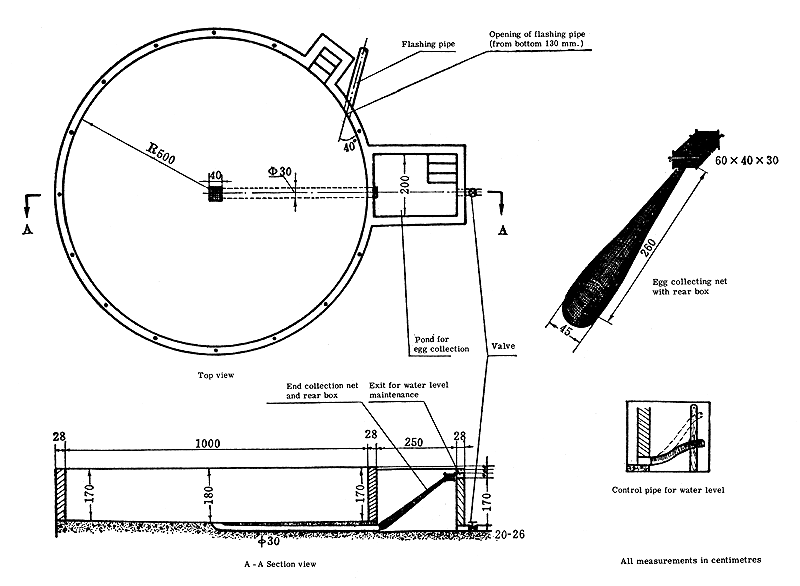
Fig. 11b Design of the circular spawning pool (dimensions in centimetres)

Fig. 12 Water inlet installed in a diagonal position on the wall of a spawning tank to circulate water, Pai-tan Lake Fish Cultivation Station
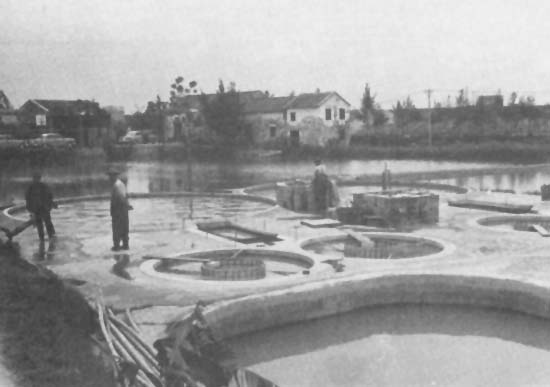
Fig. 13 Rectangular collection chamber between a large spawning pool (lower right) and two circular hatching pools, Nan-hai Station, Kwangtung Province
These are also circular in shape with one or more chambers for incubation. A single-chambered hatching pool (Fig. 14) has an inside diameter of 3.5 m, and a depth of 1.0 m with a water capacity of 9.0 m3: multi-chambered hatching pools are also used (Figs. 15a and 15b). Water circulation is very important in the incubation and hatching period. For this purpose there are several diagonally-installed pipes at the bottom of the pool. Paddle wheels are used where there is inadequate running water supply to circulate the eggs in the pool.
Portable hatching jars are also used when unusually large numbers of eggs are obtained (Figs. 16a and 16b). These jars are also very practical for small-scale spawning activities.
The success of artificial spawning of fish is dependent on the condition of the brood fish. Particular attention is given in this regard to ensure better results.
The sizes of brood ponds vary from place to place but a size of 2 000–4 000 m2 (3–6 mu) with a depth of 2–3 m is commonly used. Meticulous pond preparation is carried out by treatment with tea-seed cake, quicklime and green manure.
The rearing of brood fish also uses polyculture techniques with species combinations varying according to the major species desired. In Kwangtung Province broodfish stock density is 1 500–2 250 kg/ha (100–150 kg/mu) composed as shown in Table 7 below.
Table 7
Stocking Combination for Broodstock Rearing in Kwangtung Province
| Species | No. of fish/ha | Average Weight (kg/fish) | |
| 1. Grass carp as major species: | |||
| Grass carp | 150–200 | 8–12 | |
| Silver carp | 60–90 | 2 | |
| Mud carp | 600–960 | 20–50 g each | |
| 2. Bighead as main species: | |||
| Bighead | 80–96 | 7–12 | |
| Grass carp | 96–128 | 5 | |
| Silver carp | 32–48 | 2 | |
| Common carp | 320–480 (monosex) | 0.25 | |
| 3. Silver carp as major species: | |||
| Silver carp | 150–240 | 3–6 | |
| Grass carp | 96–128 | 2 | |
| Mud carp | 480–640 | 20–50 g | |
| 4. Mud carp as major species: | |||
| Mud carp | 1 600–2 240 | 0.8–1.45 | |
| Bighead | 32–48 | 5–6 | |
| Silver carp | 64–92 | 2–3 | |
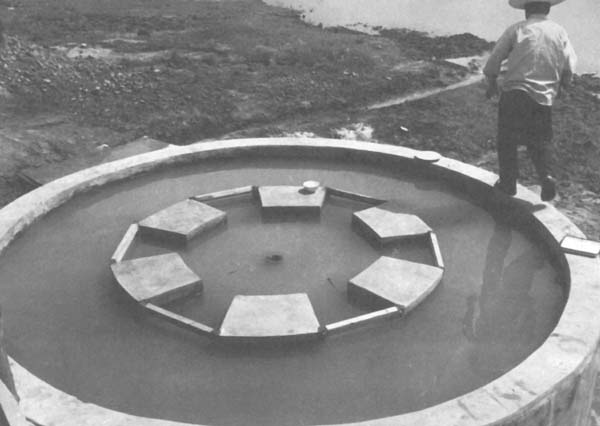
Fig. 14 Another type of hatching pool from the Hwa Chung Agriculture Academy, Wuhan
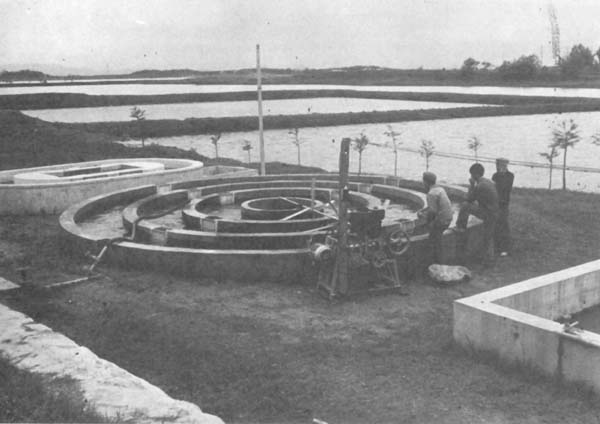
Fig. 15a A multiple-chambered hatching pool with paddle wheels for water circulation in locations where there is insufficient water for continuous circulation, Hwa Chung Agriculture Academy
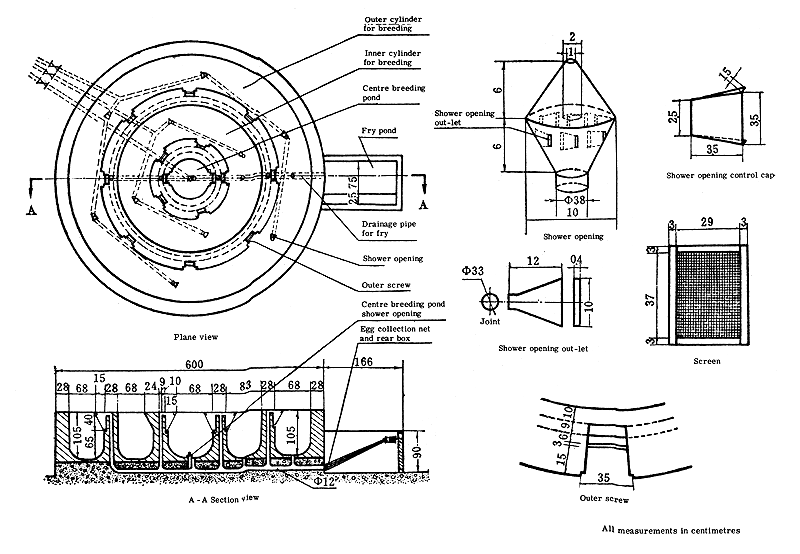
Fig. 15b Design of a three-chambered hatching pool (dimensions given in centimetres)

Fig. 16a Portable hatching jars installed below a concrete water reservoir, Hwa Chung Agriculture Academy

Fig. 16b Design of portable hatching jars as used at Hwa Chung Agriculture Academy
Water in the broodstock ponds is renewed in spring, once or twice a month, with water flowing two to three hours at a time. This simulates flooding and promotes spawning. The depth of water in the pond is maintained at 2–3 m.
Brood fish attain sexual maturity in ponds from two to five years. Silver carp mature in two or three years; grass carp four to five years; bighead three to four years, and mud carp three to four years. The males mature a year earlier than the females.
Mature fish are selected by seining from the broodstock ponds and confined for a short period of time in a crowded condition, either blocked off by nets in one corner of the pond or suspended in the seine. This operation is carried out once or twice before treatment with hormones, to acclimatize the fish to handling and transport. It also excites the fish and facilitates removal of wastes from their system before actual injection is made so that no waste products are excreted in actual spawning or release of eggs. In this manner, the spawning ponds are kept clean.
After the desired species of brood fish have been duly selected, they are injected with human chorionic gonadotropin (HCG), 800-1 100 IU per kg of body weight (Fig. 17). Hormone injection is given twice, with an interval of eight hours, the first dose being 10–15 percent more than the second. The first is usually given in the evening and the last at daybreak. Males are injected once, usually at the same time as the females are given their second dose. Treated fish are kept in the spawning pools with a sex ratio of two males to one female for natural fertilization. The dry method of fertilization is known to the Chinese but they prefer the wet method or natural fertilization in the spawning pools as this prevents injury of the brood fish. The same brood fish can be used for as long as ten years by using this method, and they are able to obtain more complete fertilization of the eggs.

Fig. 17 Injection of hormone to induce spawning at Nan-hai Station, Kwangtung Province
Fish normally spawn after a few hours from the time the second injection is given. It is not uncommon to have fertilization even an hour or less from this period, which is very good. During the whole period when the treated brood fish are kept in the spawning pools, water flows at the rate of 0.2–0.4 m3/second. Water temperature may range from 20 to 30°C, with the optimum 26°C.
After the fish have spawned, eggs are collected by opening the outlet of the spawning pond leading to the egg-collection chamber (Fig. 18). This is fitted with a net with which the eggs are concentrated for counting and transfer to the hatching pools. The eggs are stocked at the rate of 1 500 to 2 000/m2 of water volume.
During the incubation period, a constant flow of water is maintained at 0.2–0.3 m/sec velocity to keep the eggs rolling in the water and simulating the riverine conditions under which natural incubation and hatching takes place. Hatching occurs after 36–48 hours, depending on water temperature.
Optimum water quality conditions for hatching are a temperature of 26.5°C, pH between 7.4 and 8.5, and dissolved oxygen concentration greater than 4 mg/1. Satisfactory hatching is obtained with temperatures ranging from 24° to 30°C.
The newly-hatched fry are then transferred to fry nets (Fig. 19) installed in a nearby pond until the egg yolk is absorbed and the swim bladders have developed. They are then transferred to nursery ponds for growing or are sent to other fish farms.
Prior to stocking of fry in the nursery ponds, treatment with 900–1 125 kg/ha (60–75 kg/mu) of quicklime in case of dry ponds and 1 875–2 250 kg/ha (125–150 kg/mu) for wet ponds (with 1 m of water) is made to eliminate unwanted species and pests. Tea-seed cake is also applied at the rate of 325–365 kg/ha.m (35–45 kg/mu.m) depth of water. Application of lime and tea-seed cake is done alternatively to maintain the normal pH of the water. Organic fertilizer or base manure (compost) is applied at the rate of 11 250–18 750 kg/ha.m (750–1 250 kg/mu.m) depth of water, 10–15 days before stocking of fry. This is divided into two to three applications, with the first dose more than the second and third. Water quality is observed prior to seeding the fry in nursery ponds. Bighead carp (“testing bighead”) are used for this purpose. For the test, fingerlings 14–18 cm in length, stocked at a rate of about 5 000/ha, and adults, at a rate of 7 500/ha, are used. If dissolved oxygen is low, the bighead will surface, particularly in the early morning before sunrise. The Chinese associate low oxygen with over-fertility of water. This testing method is rather crude but perhaps the farmers have observed this through long years of practice. Certainly, the use of portable chemical kits for water quality analysis would be a simple thing to apply in this respect, and the techniques are well within the capability of the farmers.
The test fish are removed and fry are stocked at the following rates:
Low density stocking:
| Grass carp | 1.6–2.4 million/ha (100 000–150 000/mu) |
| Bighead | |
| Silver carp | |
| Mud carp | 4.8–6.4 million/ha (300 000–400 000/mu) |
High density stocking:
| Grass carp | 3.2–4.0 million/ha (200 000–250 000/mu) |
| Bighead | 2.4–3.2 million/ha (150 000–200 000/mu) |
| Silver carp | 3.2–4.0 million/ha (200 000–250 000/mu) |
| Mud carp | 4.6–6.4 million/ha (350 000–400 000/mu) |

Fig. 18 Egg collection net installed in the egg-collection chamber, also used for collecting fry from the hatching pool
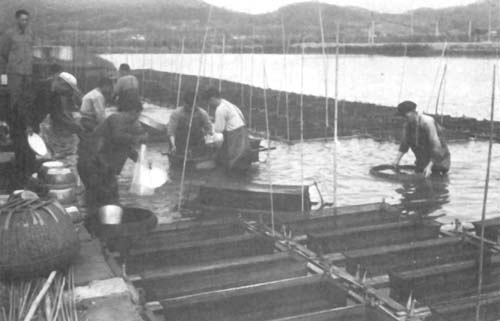
Fig. 19 Transferring fry from holding nets to plastic bags for transport, Nan-hai Station, Kwangtung Province
Feeding: elephant grass and vegetables at the rate of 13 tons/ha (875–900 kg/mu) is given in addition to fine food (wheat bran, rice bran) at the rate of 0.56 percent of total weight of fish during the rearing period of 30 days. The fry are 3.0 cm at the initial stage of rearing. Fry rearing is monoculture.
Pond preparation for rearing fingerlings is similar to that undertaken in fry-rearing ponds. A uniform size of fingerlings, 3–3.5 cm long, is used.
Polyculture is adopted at this stage, depending on the plans of production. The fingerlings are reared in two stages. In the first they are grown from a length of 3.5 to 6 cm. This requires about 30 days. Grass carp, bighead and silver carp are all stocked at a rate of 4 500 000/ha (300 000/mu).
For the second stage they are transferred to another pond where they grow to a size of 12 cm. The following stocking rates were given for three different combinations:
| 45 000/ha (3 000/mu) | - | grass carp | 1 |
| 30 000/ha (2 000/mu) | - | bighead | |
| 45 000/ha (3 000/mu) | - | silver carp | 2 |
| 90 000/ha (6 000/mu) | - | bighead | |
| 45 000/ha (3 000/mu) | - | grass carp | 3 |
| 135 000/ha (9 000/mu) | - | mud carp |
The fish are fed at the rate of 150–300 kg/ha (10–20 kg/mu) of duckweed, and 3 000–4 500 kg/ha (200–300 kg/mu) of green manure every ten days; 30 kg/ha (2 kg/mu) of peanut cake daily and 45 kg/ha (3 kg/mu) of vegetable tops daily are given as supplement. During the first month 30 kg/ha of vegetables are used daily while in the second month 30–50 kg/ha of grass are added to green manure daily.
The Mission was told repeatedly that prevention of fish diseases was emphasized rather than treatment. Nevertheless, studies on treatment of disease also continue energetically. The Aquatic Biological Research Institute of Hupei Province is one centre for such work. It gives particular emphasis to treatment with locally available herbaceous materials.
The diseases being studied include bacterial gill rot, white-head and mouth disease, enteritis, white blood disease (Ichthyophthirius multifilis), Myxosporidae (Myxobolus sp.), Lernea and Cestodes, gill lice (mussel glochidia) and fungus diseases.
Plants that have proven efficacious for treatment include Platycarya strobilacea, Rhus chinensis, Carpatia japonica and various Euphorbia. These are all used in combatting diseases caused by slime bacteria, i.e., gill rot, white-head and mouth disease.
In view of the integration of fish farming into the overall agriculture farming system, fish ponds are designed in such a way that a close link between fish pond and crop land is realized. In places where fish is a primary crop, ponds are constructed in rectangular sizes of 4 000–5 336 m2 (6–8 mu) each with pond dikes of a width varying from 1.2–1.8 m and a slope of 1:1 ratio.
On the other hand, in places where agriculture (i.e., soybean, sugar cane, mulberry) is the main activity and fish farming is a secondary crop, the size of ponds may be the same but the land area in between the ponds is much wider. This latter design was observed at the Shia-Kia People's Commune, where a ratio of water to land of 40:60 is used in farm development (Fig. 20). The technical details of farmland/fish pond layout are also discussed in section 3.8.
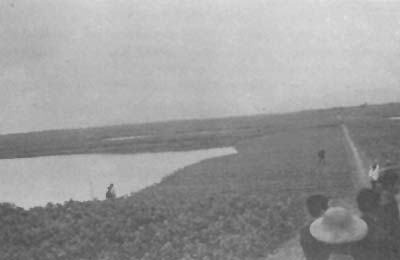
Fig. 20 A section of the fishpond/farmland layout of the Shia-Kia People's Commune, Kwangtung Province (see also Fig. 10)
The water supply is, in most cases, obtained through small canals constructed on top of the dikes. Drainage is almost always accomplished by pumping (Fig. 21). In the areas visited water for the ponds is obtained from nearby rivers, lakes or reservoirs through canals and ditches which, in many cases, were constructed primarily to provide irrigation water. The pumping stations usually include screens to prevent wild fish and other nuisance organisms from entering the canals and ponds (see also section 3.6).
The productivity of Chinese aquaculture is high. In Peking, the Mission was given the following figures used in national planning for production in fish ponds:
| North of the Great Wall | - | 1 500 kg/ha |
| North of the Yangtse River | - | 3 000 kg/ha |
| South of the Yangtse River | - | 3 750 kg/ha |
The average productivity of the places visited was generally higher than these target levels, in some cases much higher. Data for the fish farms visited are given in Table 8. In the irrigation ditches near Shanghai about 1 300 kg/ha/year are obtained, even though these ditches are also used for boat traffic. The productivity per hectare of water surface is, of course, much less in lakes and reservoirs where intensive feeding and fertilizing is more difficult (see section 4.1.1).
Total production figures were not available. It is nevertheless clear from the figures given to the Mission on the water area used for fish culture that intensive culture is a major, if not the major source of fish in China.
The use of mechanical aerators to improve the output of ponds has been recently developed. These devices are mounted on floats installed at the centre of the ponds. Their use was observed in Shanghai at the Jie-fang Commune and at Ho Sung People's Commune in Nanking where a factory manufacturing the equipment was visited.

Fig. 21 Pond layout at Pai-tan Lake Fish Cultivation Station. Structure in foreground is used as a holding area for fry before release and pumping well. An electric water pump used to empty the ponds can be seen in the background
Table 8
Production in Intensive Culture
| Location | Province | Total Pond Area (ha) | Average Productivity (kg/ha) | Maximum Productivity (kg/ha) | Remarks |
| Fang tsun Experimental Station | Kwangtung | 13 | 4 500 | 7 500 | Research |
| Le Liu Commune | Kwangtung | 2 400 | 3 000 | - | |
| Shia-Kia Commune | Kwangtung | 80 | 2 235 | - | |
| Ho Law Commune | Kiangsu | 170 | 11 430 | - | Increased to 12 750 in ponds with aerators |
| Nan Huei Breeding Farm | Shanghai | 23 | 6 225 (1975) | 15 000 | Adult fish. Aerators used with supplementary feeding of crushed snails. |
| Jie-fang Commune | Shanghai | 900 | 4 000 | 8 000 | Aerators used with supplementary feeding of crushed snails. |
The farm machinery factories of both communes produce aerators. The machines consist of an impeller, with air tubes, which is rapidly rotated, throwing aerated water up and away from the unit. They are supported by floats and anchored in position with lines extending to the banks of the pond. One unit (7.5 kW) is adequate for a pond of about 0.5 ha (8–10 mu) in size.
These communes were using aerators in their fish ponds quite extensively. Previously, when the oxygen level in the ponds became too low, water had to be pumped into the pond, at first by hand and later by power pumps. Such pumping, however, was observed to reduce the fertility of the ponds by dilution. The aerator, by stirring the water, increases oxygen without water exchange. Aerators were operated for two to three hours around noon, or in the morning on overcast days. Frequent operation (once a day for an hour) has been shown to increase yields by about 14 percent (28 percent for silver and bighead carp). This is presumably brought about by the circulation of nutrients, stimulating plankton growth and by increasing the feeding activity and metabolic rate of the fish. The machine is now called a “yield-increasing machine” instead of a “fish-saving machine” (Fig. 22).
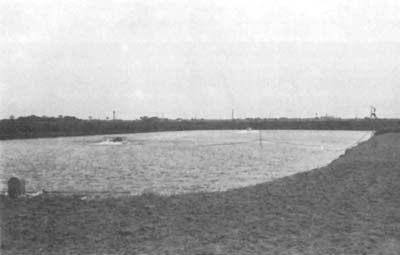
Fig. 22 Floating aerator as used at the Jie-fang People's Commune, Shanghai
For deepening and excavating ponds, a hydraulic dredging machine has been developed by the farmers in Nan Huei County, Shanghai. The machine has a high pressure pump (20 kW), tube and nozzle to produce the jet stream used for digging. A suction pump and tube transports muddy water to the embankment site. Excess water is removed from the embankment with a vacuum pump, sand filter and suction pipe (see Figs. 23 and 24).
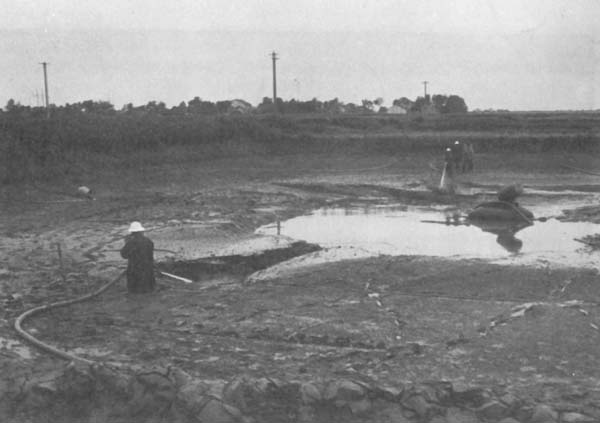
Fig. 23 Operation of the dredging machine, Jie-fang People's Commune. The suction pump at the centre transports the mud formed to the site of dike construction
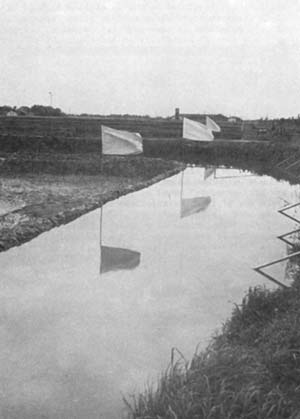
Fig. 24 Settling of mud from the dredging operation to form a pond dike. Pipes at right pump excess water from sand filters embedded in dike
Harvesting of fish is done mainly by the use of seine nets dragged from end to end of the pond. The net may be operated with the use of flat boats at both ends to drag the seine or simply by pulling the net by hand through the length or a section of the pond. The fish are concentrated in a small portion of the net where they are scooped and loaded in baskets for transport to market. One unusual feature of the operation, seen at the Ho Law Commune, was the use of inflated automobile tires as floats to support the head rope. Wooden frames about 0.5 m high were mounted on top of the rubber tires. The top of the seine could be hooked on these floats (Fig. 25). These devices hold the float line about 0.25 m above the water surface reducing the escape of jumping fish. As the fish-catching operation neared completion the floats were removed from the net. This is a very practical innovation as the nets are less heavy and more convenient to store when not in use. The floats can also be used in other fishing operations within the farm without necessarily hauling the whole net assembly to another place. After using such floats, the rubber tires can be deflated for storage. Not all communes use the same type of float in the seine. This is an indication of local innovation in harvesting equipment.
No mechanical equipment for fish transport on the farm was seen. Such transport is usually accomplished by shoulder pole from pond to pond or from the pond to the live fish boat that brings fish to the market place (Fig. 26).
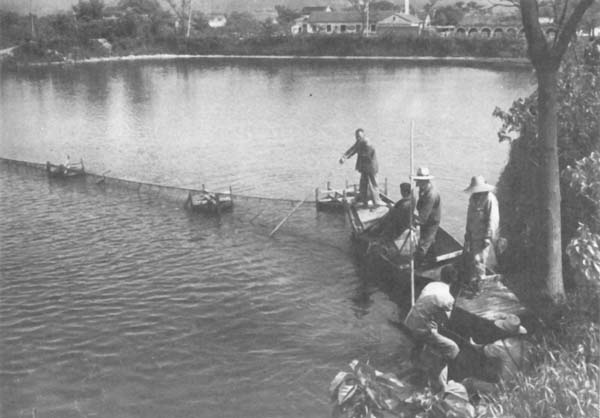
Fig. 25 Seining a pond using rubber tire floats to hold net above water, Ho Law People's Commune, Wushi
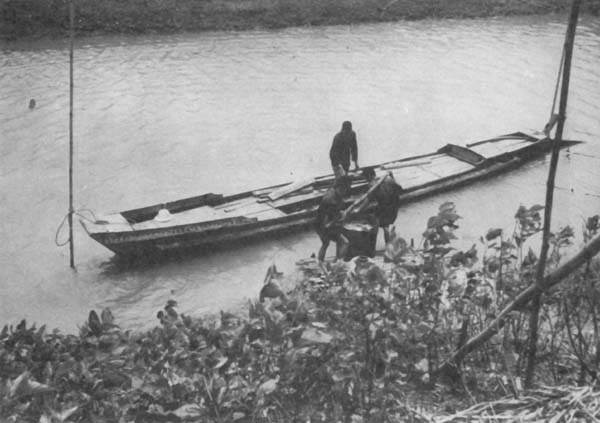
Fig. 26 Fish transport at Le Liu People's Commune: (a) shoulder pole, (b) live fish boat in canal
Freshwater mussel culture is undertaken in some ponds, lakes and reservoirs (Fig. 27). The species used are Anodonta woodiana (Lea) and Hyriopsis cumingi (Lea).
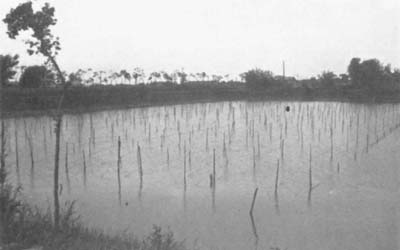
Fig. 27 Pond for culture of the freshwater mussel for pearl production, Chen-tung People's Commune, Shanghai
These mussels are used for pearl culture. The technique of pearl production is similar to that used in Japan. However, because the pearls are produced for medicinal purposes, the shape and quality of the pearls are not so important to the Chinese fish farmer. Pearls are obtained in one or two years of rearing, usually two. A mussel can be made to produce from 20-40 pearls (Figs. 28a and 28b), depending on the number of nuclei implanted in it.
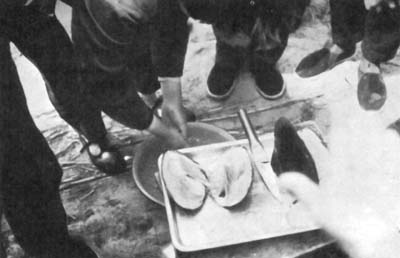
Fig. 28a Freshwater mussel opened for the removal of pearls, Chen Tung Commune
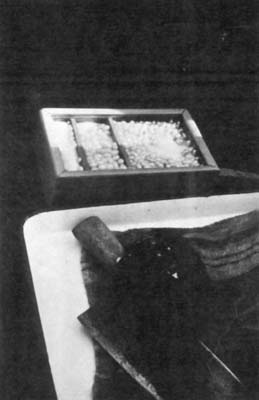
Fig. 28b Pearls produced at Chen Tung Commune
The culture of freshwater pearls might well be introduced in other countries in lakes and reservoirs as a productive sideline occupation for artisanal fishermen. It does not require a big space nor sophisticated equipment and farm implements. However, skill is required in implanting the nucleic material for pearl formation, and further research is needed to improve the shape of the pearls for most markets.
Mink are raised as a sideline occupation in some fish farms in Shanghai. The Chinese call it a precious water animal because its skin is made into coats. Mink are fed with trash fish collected from the ponds or nearby lakes and reservoirs, or from marine waters. The feed consists of 0.4 kg of fish, 0.01 kg of grain and 0.01 kg of vegetables daily. Mink produce a litter every year, normally two to three young per female, but some individuals can give birth to six to eight young. The animal attains full growth in a year at which time it is slaughtered for its fur and the meat is fed to pigs. The skin is valued at Yuan 18 (U.S.$ 9.00) per piece.
Cross-breeding of the mirror carp and common carp has been carried out at the Freshwater Research Institute at Wuhan. The hybrid was found to have a much faster growth rate than the parents. A hybrid fingerling of 10 cm grows to 1.0–1.5 kg in six months rearing period. Tests in the use of the hybrids in polyculture, at a stocking density of 10 000 normal “family fish” species plus 10–20 hybrids, showed that the hybrids would attain 1.5 kg in six months.
Silver carp and bighead have also been cross-bred but the characteristics of the hybrids are still under evaluation.
Aquaculture in China is a part of the overall agricultural farming system. It is either carried out as a primary farm occupation, a secondary or sideline activity depending on the extent and nature of land and water resources available. This integration of farming activities provides a vivid demonstration of how the full use of all raw materials available in the farm can be cycled into the production of food. Animal manures are used to fertilize the ponds and croplands; the land, in turn, produces crops for food of animals, fish and man; the wastes of fish accumulated in the pond and/or lake humus are recycled back to the soil where land crops are grown. This illustrates the practical reasons for integration and diversification of land and water farming.
Integration of aquaculture with agriculture is carried out only on a limited scale in other countries, unlike the full integration that is found in China. A major reason for this is the difference in the control of the means of production, and in the ownership of resources used for production. Most countries have private land ownership systems where it is difficult to implement a unified development strategy. In China, land is state-owned and development programmes are centrally directed even though implementation is highly decentralized. This gives flexibility at the local level in undertaking their respective production activities but at the same time maintains central control over the resources decisive for nationwide development. Local needs and experience are the basis of planning which provide a strong motivation for rural production and development. Innovation in methods and equipment is encouraged.
Generally, agricultural development, plans and programmes elsewhere overlook aquaculture simply because aquaculture has not gained recognition as an integral part of farming activities. It would, perhaps, be beneficial to FAO member countries and to FAO itself to reexamine their approaches to agriculture development to include the development of aquaculture to effect the maximum use of resources, such as land, water, manpower and raw materials of production.
While the polyculture technique of freshwater aquaculture is known in other countries, its practice elsewhere, except in India, is not as wide and extensive as is found in China. The reasons for this may be:
the lack of organizational and statutory arrangements to promote aquaculture in general and polyculture in particular;
the lack of suitable species of fish for polyculture;
the lack of readily available fish seeds for aquaculture use;
the lack of demonstration activities by which polyculture of locally-available species may be brought to the attention of farmers and local planners;
the lack of adequate research activities to back up the development of freshwater aquaculture;
the lack of an effective mechanism for extension work to transfer aquaculture technology at the farm level;
the lack of financial support for small-scale aquaculture operators.
One important feature of the recent development of Chinese fish culture is that research activities are undertaken with the combined participation of fish farmers and technicians. Scientists work in the farms, which facilitates rapid transfer of technical information and practical experience among the workers. The rapid dissemination of technical information and any new innovations in fish-farming techniques take place through regular sessions of summing-up farm experiences among the production teams from different locations. Improvements in farming methods therefore take place quickly, even before the research results and experiences have been written down in printed form. Extension workers, such as those being trained in other countries, are less necessary in China. The problem of communication gaps between farmers and technicians, so typical in other developing countries, does not exist in China on account of the work system that prevails in the country.
The role of aquaculture in integrated rural development was vividly demonstrated to the Mission. While such development has been the goal in most developing countries, it has remained an elusive one due in large part to problems of organization and institutions which somehow preclude the attainment of successful results.
There is a great potential for aquaculture development in the developing world on sites which are still in the public domain. There is also an abundant supply of human resources, the majority of which are made up of subsistence farmers who do not own the land they till. Aquaculture technology is already developed and different methods of production are known, including those practised in China. Species used for aquaculture in China are also found in other countries. There are also similar species which could be used for polyculture.
With the above resources, the developing countries might greatly benefit from the Chinese experience with the help of FAO by:
organizing study tours to China composed of government officials and others concerned with decision-making in aquaculture, agriculture and water resource development policies and planning;
establishing pilot projects to demonstrate the feasibility of a fully integrated aquaculture development in developing countries. A project proposal of this nature is already in the pipeline prepared with the collaboration of the Department of Fisheries.
Furthermore:
FAO should promote and encourage the development of integrated aquaculture by examining its own procedures and approach to providing technical assistance to member countries on agriculture development. The involvement of farmers in the actual project planning and implementation should be looked into as a means of reaching the grass-root level as directly as possible.
FAO should assist in the documentation of the Chinese aquaculture systems. A documentary film, which could be used in the dissemination of information through seminars and training of farmers, would be specially useful. Such a film, if produced in different languages, would educate and inform as many people as possible at one time in many places around the world, particularly in developing countries where food production is more urgently needed. As an initial step, the commentary of the Chinese film on artificial spawning of fish should be translated into English and perhaps Spanish and French for use in the training of fish farmers in developing countries.
The Mission brought back to Headquarters various practical manuals on aquaculture in China. Some of these documents should be translated for the use of FAO and FAO member countries. A list of this material is given in Appendix II.